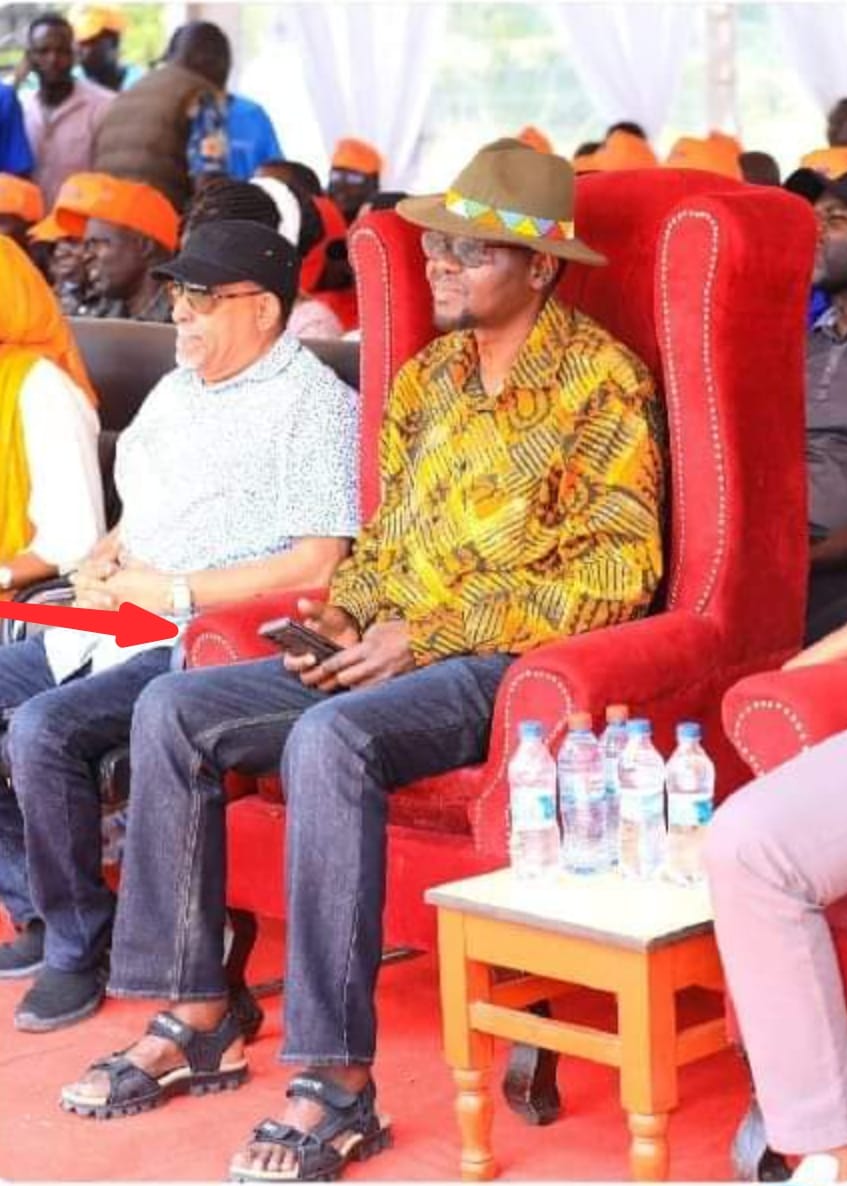Why Governors Wanga and Ayacko Have Their Priorities Upside Down and Won’t Grow Homa Bay and Migori Economies With Vanity Office Block Projects Instead of Building Factories
NEWS ANALYSIS
By REUBEN MUSONIK, THE DISPATCH DIGIAL POLITICAL EDITOR
Economic progress in Kenya, and indeed many African countries, remains a distant dream when leadership prioritizes the creature comforts of government offices over industrial projects. This is precisely what we are witnessing in the counties of Homa Bay and Migori, where Governors Gladys Wanga and Ochillo Ayacko are steering funds toward the construction of luxurious office blocks, while the very foundation of local economic growth—factories and industries—remains underdeveloped.
Wanga’s Homa Bay Office Block Controversy
Homa Bay Governor Gladys Wanga has faced criticism for demolishing a KSh 500 million animal feeds factory, initially established by her predecessor, to construct a modern office block for the county government. While her administration defends this decision, claiming that the office block is necessary for improved governance, public backlash has been severe. Critics argue that building an office block does not offer immediate or direct economic benefits in comparison to a factory, which would have created jobs, bolstered the agricultural sector, and generated long-term value for the county. The animal feeds factory, for instance, was an investment aimed at boosting the agricultural economy by supporting livestock farmers and creating jobs in the manufacturing sector.
Instead of supporting agricultural productivity and manufacturing, Wanga’s administration has focused on an office project that will house civil servants whose jobs are already secure and won’t create new jobs, except the temporary construction jobs that will end with the project’s completion. The project is being financed by the County Pension Fund, raising questions about the priorities of public spending and whether the contributors to the pension fund were consulted before the vanity project was conceived and funding agreed. The local economy, in which people live with and on the edge of poverty, would have benefited far more from investments in publicly-owned factories, which provide direct employment and value addition.
Ayacko’s Similar Office Block Focus in Migori
Migori Governor Ochillo Ayacko’s administration is also following a similar path. Instead of investing in factories or industries that could stimulate local production, create jobs, and improve livelihoods, Ayacko’s government is constructing the county headquarters at Migori and other county offices. Since he took over in Migori, Ayacko has shown that he has no interest in the economic progress of the people of Migori, only in his political survival and longevity, for which he has obstructed funding for a potato processing factory already constructed by the European Union at Getong’anya in Kuria West and is in fact planning to sell it to Indians. Ayacko also entered into a partnership with the National Government for an Industrial Aggregation Park in Nyatike sub county which, he admitted to a small audince, he was only doing to attract the political support of the region at the count polls in 2027 and does no see it bearing any fruit since he does not plan to fund it. Already, the park has gobbled up Ksh 750 million in budgetary allocation with little to show for the funding on the ground. It was initially planned to cost Ksh 500 million with the National Government contributing half the cost while Migori bore the other half. That means Migori should have allocated only Ksh 250 million but had allocated three times ha amount, which has been described as budgeted fraud through a project planned to be a white elephant and intended to help Ayacko to purchase victory at the next election.; While the office block may improve administrative efficiency, the immediate needs of the population—jobs, industrial growth, and economic development—are not being addressed.
Migori County, like Homa Bay, has the potential for industrial expansion, particularly in agriculture. The county could benefit from the establishment of factories processing local agricultural produce, such as sugarcane, maize, potatoes or coffee. This would provide direct employment, boost local industries, and create supply chains, fostering sustainable economic growth. However, the focus on building office blocks for county administrators fails to address these critical economic challenges. For instance, both Ayacko and Wanga intend to spend Ksh 500 million on their vanity projects while with that amount, they can start small industries in ALL their sub counties and employ more than 100,000 people, which would significantly reduce poverty.
Industrial Growth as a Pathway to Prosperity
Factories, unlike office blocks, directly contribute to the economy by adding value to local resources, increasing exports, and creating sustainable jobs. Take the example of a food processing plant: it would not only process local raw materials like maize or coffee but also create a supply chain that includes farmers, logistics providers, and retail businesses. This creates a ripple effect of economic activity, leading to greater wealth distribution and poverty reduction.
In contrast, an office block—no matter how modern or efficient—offers little to no direct economic value beyond short-term construction jobs. The long-term positions in these offices are typically filled by existing government workers, meaning the employment impact is minimal. Furthermore, the tax revenue generated by a factory is far more substantial and sustainable than what can be expected from an office block, where administrative processes do not directly generate wealth.

Misplaced Priorities and Long-Term Consequences
Governors Wanga and Ayacko’s focus on office blocks is indicative of a broader trend in Kenyan and indeed African leadership, where political vanity projects are often prioritized over real economic development. These projects are not any different from Mobutu SeseSeko’s Gbadolite palace deep in the jungle of the Congo; President Felix Houphouet Boigny’s the Basilica of Our lady of Peace in his hometown of Yamousoukro at a cost of (then) US$ 300 million (or in Kshs 40 billion). All this time, the people of Sierra Leone wee groveling in starvation and poverty as the “Sage of Africa” or “Grand Old Man of Africa” swung in opulence of gold, bodyguards and wealth. Similarly, Ayacko has projected himself as king swi9ging with well-fed bodyguards and describes himself as the “Grandson of a Tycoon”, which seeks to justify his misguided ego projects unknowingly supported by his party, ODM. This misallocation of resources only serves to delay progress. Offices may look impressive, but they do not manufacture goods, process agricultural products, or create the kinds of jobs that lift people out of poverty. By prioritizing such projects, leaders risk reinforcing economic stagnation in regions with the potential for industrial growth.
Industrial and agricultural development should be at the forefront of any economic strategy for counties like Homa Bay and Migori. Factories that process local materials create a multiplier effect—improving supply chains, increasing demand for raw materials, and generating jobs not just in the factory itself, but across related sectors such as transportation, retail, and farming. This is the kind of economic growth that improves living standards and increases regional GDP.
In stark contrast, an office block adds little value to the broader economy. It serves the few civil servants who occupy it, and while efficient governance is important, it should not come at the cost of economic growth and job creation.
A Call for Industrialization Over Vanity Projects
For true economic development, African leaders, including Governors Wanga and Ayacko, must refocus their efforts on industrialization and agricultural value addition. The current office block projects reflect a short-sighted approach that prioritizes governance infrastructure over the real needs of the people. If local governments truly want to drive economic growth and reduce poverty, they need to invest in factories, agro-processing plants, and industries that will spur job creation and production.
The future of Kenya’s economic growth lies not in the construction of grandiose office blocks but in the establishment of industries that generate wealth, create jobs, and sustain local economies. Without this shift in priorities, the dream of economic prosperity for counties like Homa Bay and Migori will remain just that—a dream.
[stock-quotes-list stockExchange=”NASE” width=”100%” symbols=”KQ;SCBK;ICDC;MSC;EABL;^NASEI;FOREX:USD/KES” allowSort=”true” includeChart=”false” logoMaxHeight=”20px” logoMaxWidth=”90px” height=”100%” culture=”English-UK”]
